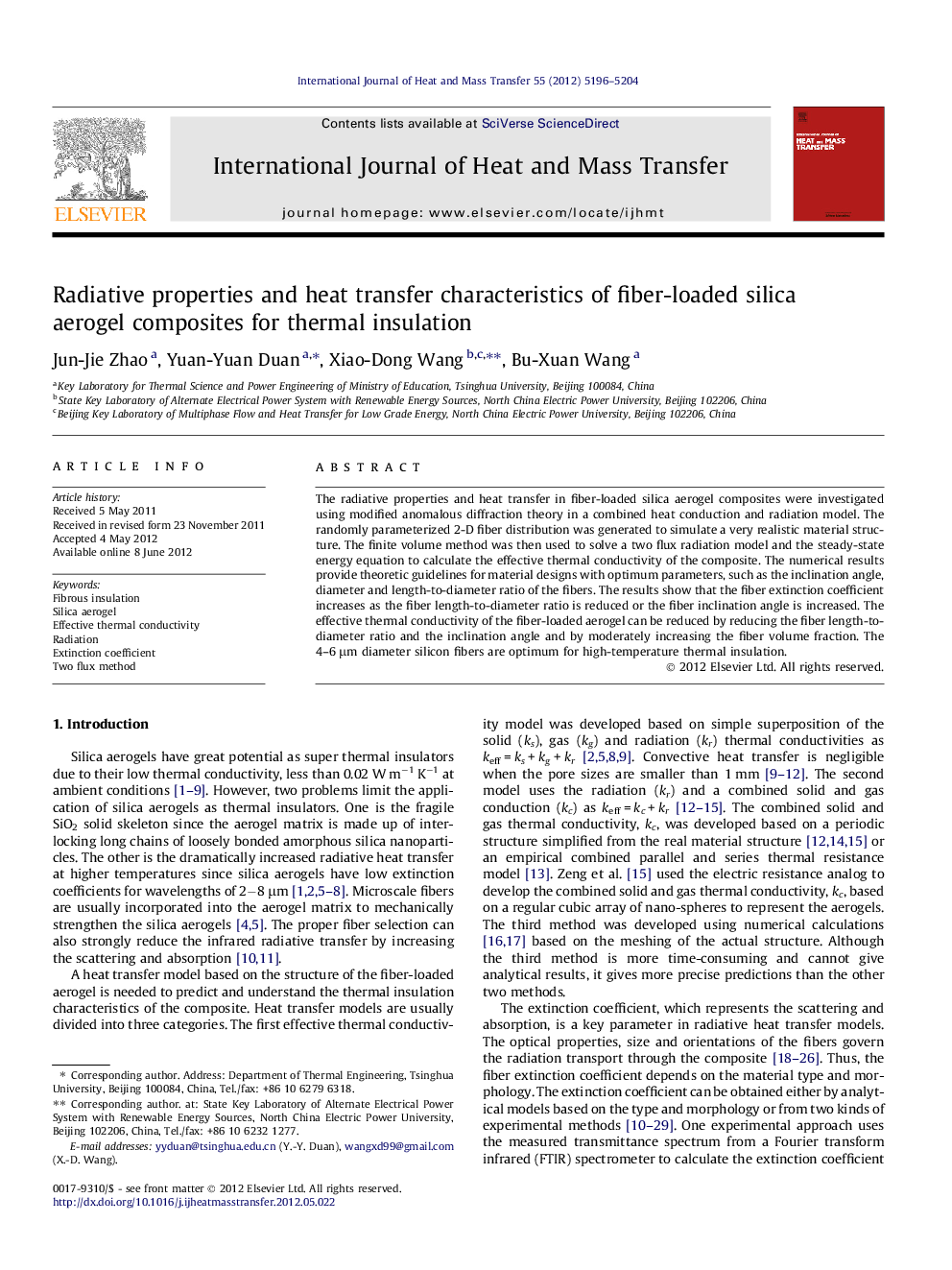| Article ID | Journal | Published Year | Pages | File Type |
|---|---|---|---|---|
| 658638 | International Journal of Heat and Mass Transfer | 2012 | 9 Pages |
The radiative properties and heat transfer in fiber-loaded silica aerogel composites were investigated using modified anomalous diffraction theory in a combined heat conduction and radiation model. The randomly parameterized 2-D fiber distribution was generated to simulate a very realistic material structure. The finite volume method was then used to solve a two flux radiation model and the steady-state energy equation to calculate the effective thermal conductivity of the composite. The numerical results provide theoretic guidelines for material designs with optimum parameters, such as the inclination angle, diameter and length-to-diameter ratio of the fibers. The results show that the fiber extinction coefficient increases as the fiber length-to-diameter ratio is reduced or the fiber inclination angle is increased. The effective thermal conductivity of the fiber-loaded aerogel can be reduced by reducing the fiber length-to-diameter ratio and the inclination angle and by moderately increasing the fiber volume fraction. The 4–6 μm diameter silicon fibers are optimum for high-temperature thermal insulation.
